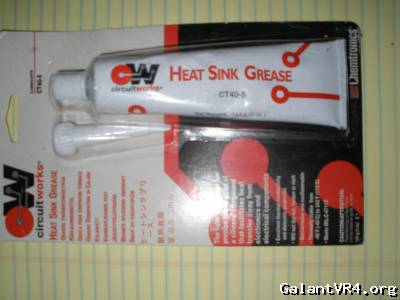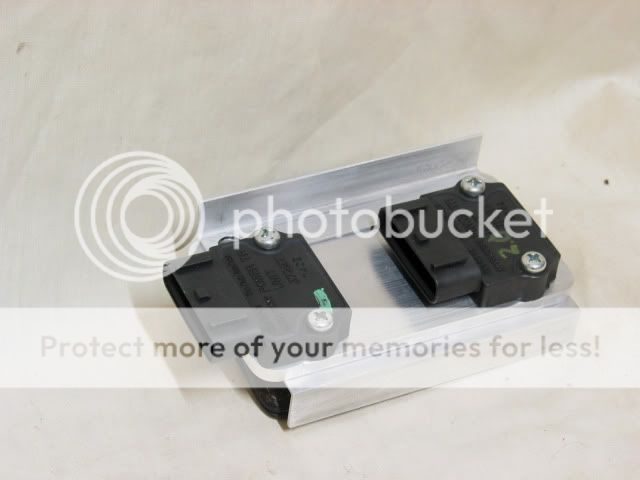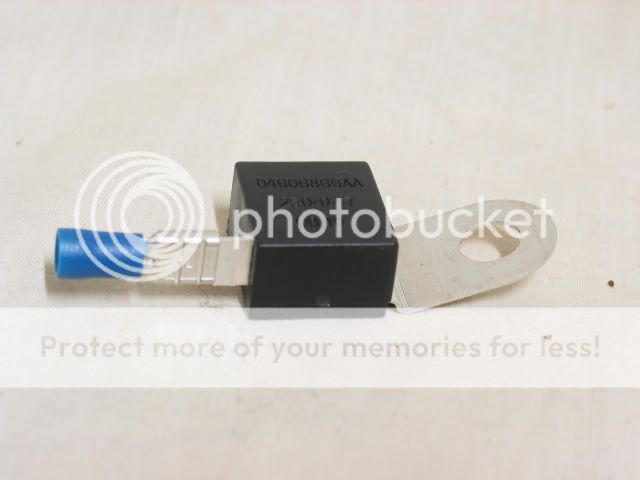Quoting TrevorS:
Not too sure about how well silicon grease would work, the contact faces of the packs are very uneven. I tried sanding the faces with 600 grit on a hard flat surface and only the edges of three sides plus around the bolt openings are in contact. Not especially encouraging /ubbthreads/images/graemlins/frown.gif!

As you've noticed, many standard silicone di-electric greases are kinda runny, and they don't fair well in may places under the hood. Being that thin makes them good for potting connections, but not so good as a heat transfer agent, where you want it to stay put forever.
I'm lucky enough to live in an area that has a
kick-ass network of suppliers that service the aerospace industry, and I am constantly finding cool sh*t in the shops of the big dogs.
One other thing I like about the aerospace industry is they "time out" a lot of their chemicals, and screamin deals/freebies are often found if you know the right folks /ubbthreads/images/graemlins/smile.gif
This product from Chemtronics is one of my favorites.
It's
specifically a heat transfer agent.
It's
thick, almost like a paste, and stays where you put it.
The working temperature range is -42* to 342* f, and I've found it to be stable in almost any condition you'll ever find in an engine compartment. It fills *fairly* large gaps, and it (or a suitable facsimile ) may be just the ticket for your application.
You can peruse the Chemtronics catalog
here
You *might* also be able to find it (or a reasonable substitute) at a local electronics supply house. If it meets Mil-Spec C-4713, you've *probably* found the good stuff.
If you can't find it locally, I can send you some.
I got
lots /ubbthreads/images/graemlins/rofl.gif
Quoting toybreaker:
Please note the coils are fed directly from the ignition switch down the same wire that feeds the fuel pump leg of the mpi relay. Increasing the current carried by the ignition switch may result in a
significant shortening of it's service life. At the very least, it will result in some voltage drop out to the coils as well as the fuel pump. A separate dedicated relay used to feed your new coil circuit, located out in the engine compartment would probably be the mostest bestest way to work the supply side.
Install a dedicated coil power supply relay out in the engine compartment.
Feed it fused power from the battery down a
quality ten gauge (or eight awg if youre feeling froggy)
Switch the relay on using the original black/white wire that used to power the coils.
(an interupt could be put on the ground leg of the relay as a hidden security feature...)
For the connections out to the coils, I would make a jumper harness that plugged into the original harness and then into the twin ignitor multiple coil harness, (leaving the option to go back to stock if the whiz bang shitarree lost it's desire to throw a spark)
Quoting TrevorS:
I've run 10 AWG from the battery (15A fuse) to a firewall mounted relay followed by 12 AWG to the coil connector. I would have preferred to preserve the OE harness, but there's a lot of 16 AWG wire running around in it (significant lengths) and I'm already not happy with 16 for driving and powering the COP coils. I'm using the OE 14 AWG B/W to supply the transistor pack OR electronics and to operate the relay. Reason I'm powering the OR circuitry is that some electronics don't like it if part of their complete circuit is unpowered, it can result in leakage or even breakdown -- as mine is a '90, my OR is performed at the coils, so I use neither of the transistor pack outputs.
Sounds like you're getting serious!
... also sounds like you're going to teach all a bit about the differences in the '90 ignition system.
That'll work out well for the folks who are converting ggsx's to turbo status. /ubbthreads/images/graemlins/smile.gif
Quoting toybreaker:
It "appears" to my untrained eye that the ecu is just tickling one leg of a switching transistor in the igniter case when it wants to fire a coil.
It's this transistor located in the ignitor that will switch and carry the current that energises the coils. This means the ecu will only see the load that it takes to switch a transistor. The actual coil ground will run thru the legs of the ignitor transistor and out to ground on pin 3 (black wire) from the ignitor unit,
not back thru the ecu.
I must say I don't completely understand how much loading the ecu "sees" when it triggers the transistor in the ignitor to fire the coils, but I do know it looks like we're preparing to double that load. To an uneducated mook like me it seems like we should be sure the ground traces from the ignitor triggers are up to the extra loading, and the actuall switching components are up to the task...
long term ...
At any rate, I would probably optimise/upgrade the ground path out of the ignitors, as they will see higher loadings.
Quoting TrevorS:
It appears to me the ECU is actually using a self protective pullup resistor to drive the power transistor packs. The biggest question being whether the resistor can provide enough current to drive the hoped for increase in total current. Tightening up the ground should definitely help this. The OE transistor pack ground wire is also 16 AWG and runs through the harness. I spliced the two transistor 16 AWG to a short 14 AWG and grounded it directly to the manifold. The manifold itself has a stiff ground to chassis on the firewall side.
Sounds like you have a good grasp on things.
... much better than me! /ubbthreads/images/graemlins/rofl.gif
I grew up in an era of points/carbs, and even though I've studied the circuit diagrams, read the books, and
really tried to understand things, I've always viewed electronic devices as vodoo down at the component level.
I grasp the concepts okay, but the specifics elude me.
I stOOpid that way, so if you could dumb it down a little for me, I'd appreciate it! /ubbthreads/images/graemlins/smile.gif
One concern I have is that they may be small/subtle timing differences between the various components.
Will a difference in the resistance/capacitance/inductive voodery of the various components that are being used in the parallel circuits cause any timing or feedback type problems?
Quoting TrevorS:
I case anyone's interested, here's the OE Intrepid and 300M 2.7L and 3.5L ignition capacitor, one of which mounts adjacent a COP module on each of the two cylinder heads.
The printed rating is identical to the one in the OE coil-pack assembly (.47uF/250V), but the package is different. The ignition capacitor was $15 from the local Dodge establishment ($20 online), but no doubt cheaper at a junkyard /ubbthreads/images/graemlins/smile.gif!
Nice find!
I like what you're doing here, Trevor.
Sourcing
matching components is one of the "secrets" to making one off stuff work.
... please be sure to insulate that female terminal/connector where it plugs onto the condensor body well!
A little heat shrink over the whole terminal will do the trick.
Please keep the thread updated with your progress!













